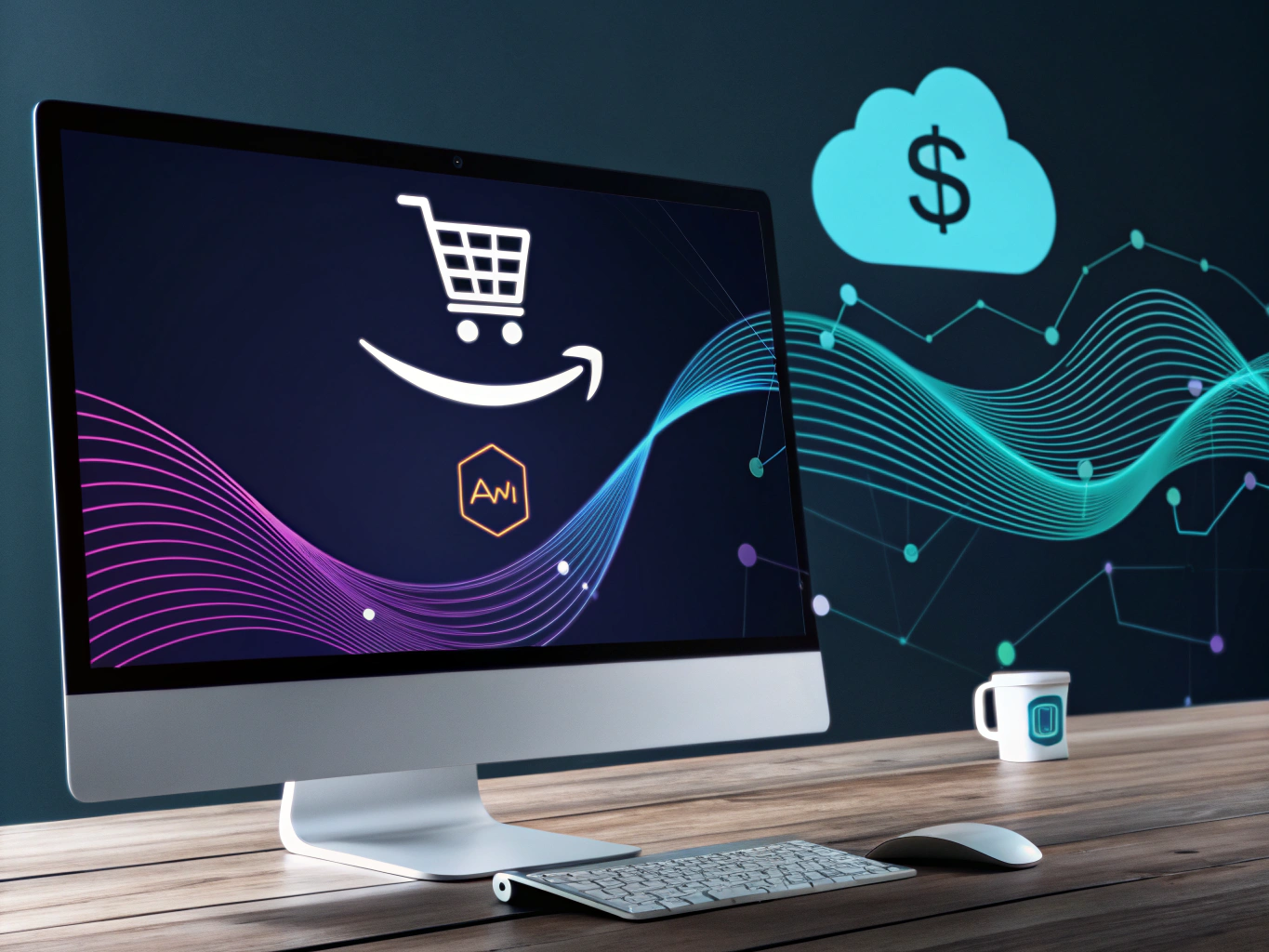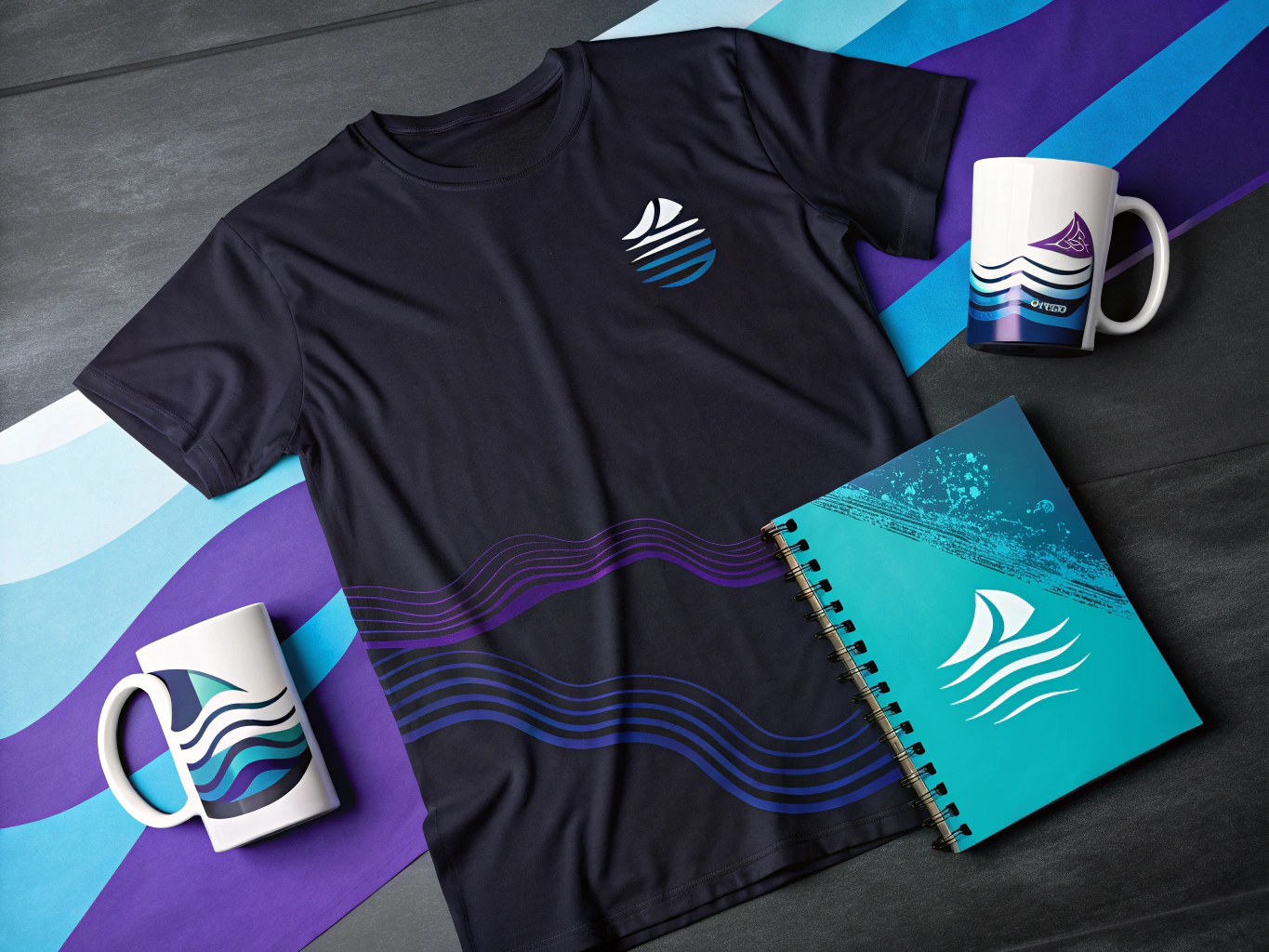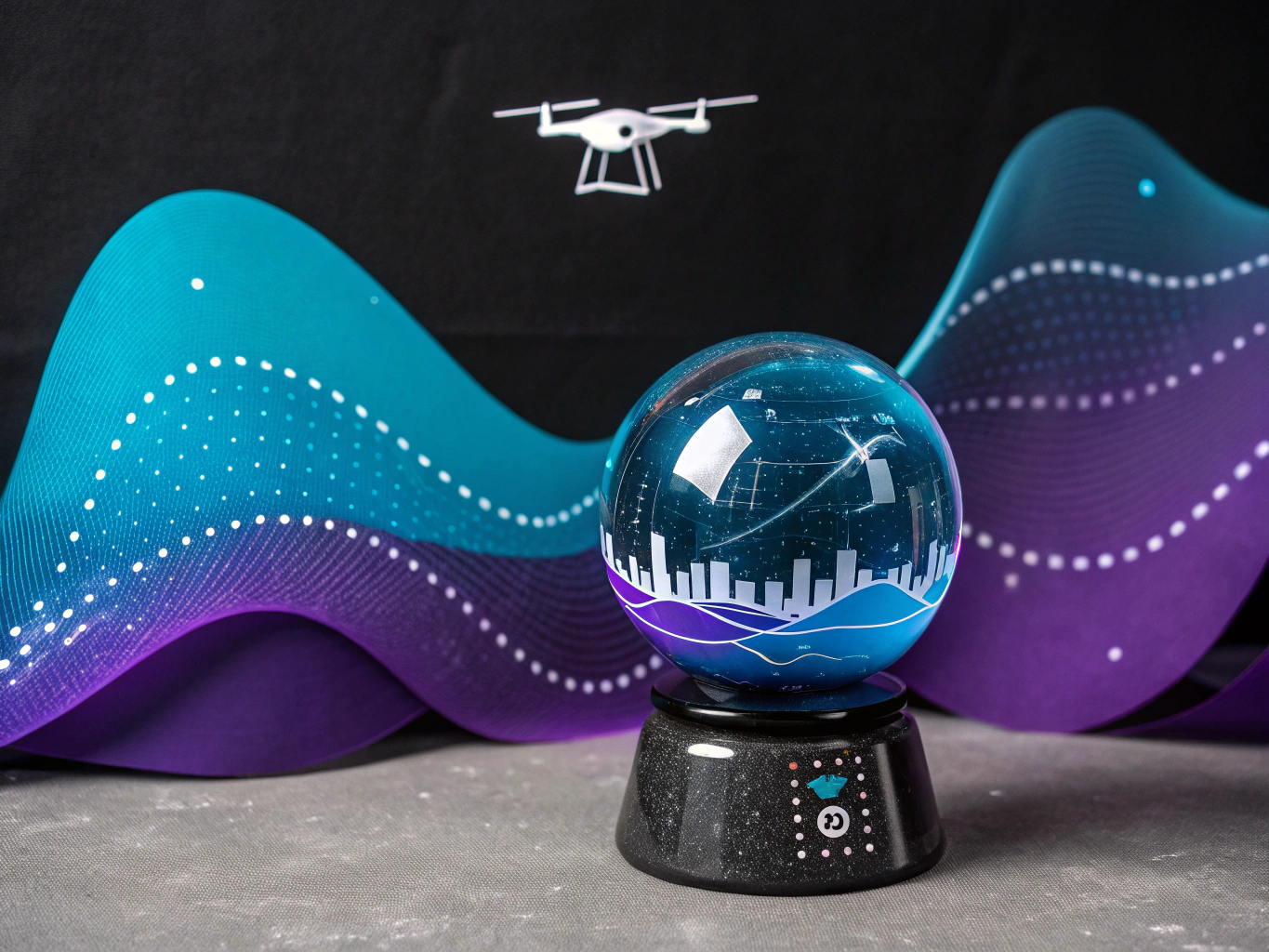Remember when selling on Amazon meant having a garage full of inventory, constantly worrying about storage costs, and praying you didn’t order too much of that “sure thing” product that ended up collecting dust? Yeah, those days are becoming as outdated as dial-up internet.

I’ve spent the last decade watching Amazon transform from a simple marketplace into what I like to call the “everything ecosystem.” And here’s the thing – one of the most fascinating shifts I’ve observed is how sellers can now build six-figure businesses without ever touching a single product. Wild, right?
But let’s be real: selling on Amazon without inventory isn’t some magical get-rich-quick scheme (if anyone tells you otherwise, run). It’s a legitimate business model that requires strategy, understanding, and yes – actual work. But when done right? It’s like having a business that runs on autopilot while you focus on growth rather than logistics.
Understanding How to Sell on Amazon Without Inventory: The Basics

Think of inventory-free selling as the “asset-light” approach to ecommerce. Instead of tying up your capital in physical products, you’re essentially becoming the middleman – but a smart, strategic middleman who adds real value to the supply chain.
Here’s what fascinates me: According to recent market data, over 40% of Amazon sellers are now using some form of inventory-free business model. That’s not just a trend; it’s a fundamental shift in how ecommerce operates.
The Psychology Behind Zero-Inventory Business Models
Before we dive into the methods, let’s talk about why this approach is gaining so much traction. It’s not just about avoiding inventory costs (though that’s a pretty sweet perk). It’s about flexibility, scalability, and what I call the “test-and-scale” advantage.
When you’re not locked into inventory, you can pivot faster than a startup changing its business model after a bad pitch meeting. See a trending product? You can list it tomorrow. Market shifting? You’re not stuck with thousands of units of yesterday’s hot item.
Method #1: Mastering Amazon Dropshipping
Let’s start with dropshipping – probably the most well-known way to sell on Amazon without inventory. But here’s where most guides get it wrong: they treat dropshipping like it’s still 2015.
Modern Dropshipping Strategy
The game has changed, folks. It’s not just about finding products on AliExpress and listing them on Amazon anymore (though that’s still happening, despite what I’d recommend). Modern dropshipping is about building relationships with domestic suppliers, understanding your supply chain, and creating real value for customers.
Here’s what successful dropshippers are doing differently in 2024:
- Building relationships with multiple suppliers to ensure backup options
- Using automation tools to manage pricing and inventory sync
- Focusing on quality control through sample orders and supplier vetting
- Creating unique bundles and product combinations
Legal Requirements and Amazon’s Policies
Let’s talk about the elephant in the room: Amazon’s dropshipping policies. They’ve gotten stricter, and for good reason. You need to ensure:
- You’re the seller of record for your products
- All packing slips, invoices, and external packaging identify you as the seller
- You’re responsible for accepting and processing returns
- You comply with all terms of your seller agreement
Method #2: Print-on-Demand – The Creative Seller’s Paradise

This is where things get fun. Print-on-demand (POD) is like having your own merchandise line without the risk. And with platforms like Printify Amazon integration and Merch by Amazon, it’s become more accessible than ever.
The POD Revolution
I love POD because it combines creative freedom with technical efficiency. You’re essentially running a design business where someone else handles all the production and shipping. It’s perfect for content creators, artists, and entrepreneurs who want to monetize their creativity.
The key to success in POD? Understanding your niche. I’ve seen sellers crush it by focusing on specific communities – whether it’s dog lovers, software developers, or vintage car enthusiasts. The more specific, the better.
Setting Up Your POD Business
Here’s what you need to know about getting started:
- Choose your POD platform (Merch by Amazon, Printful, Printify)
- Understand design requirements and specifications
- Research trending designs and niches
- Create a cohesive brand strategy
- Test different product types and designs
Getting Started with Amazon POD Services
There are two main routes here: Amazon’s own Merch by Amazon program and third-party POD services that integrate with Amazon. Each has its quirks and perks, kind of like choosing between in-house talent or freelancers.
Merch by Amazon: The Inside Track
Merch by Amazon is like getting a backstage pass to Amazon’s POD machine. You upload designs, set prices, and Amazon handles everything else. But there’s a catch – you need an invitation. The application process can take weeks or months, and you’ll start with limited design slots.
Here’s what makes Merch worth the wait:
- Direct integration with Amazon’s ecosystem
- Prime shipping eligibility
- No upfront costs
- Automatic pricing optimization
Third-Party POD Services: The Flexible Alternative
Not willing to wait for Merch approval? Services like Printful, Printify, and Teelaunch are your new best friends. These platforms connect with Amazon through integrations, usually via Shopify, giving you more control over your product range and pricing.
I’ve seen brands crush it using these services because they offer:
- Wider product selection (we’re talking everything from phone cases to beach towels)
- Better design customization options
- More control over branding and packaging
- Multiple marketplace integration options
Method #3: Amazon KDP – The Digital Product Goldmine
Amazon KDP (Kindle Direct Publishing) is probably the most overlooked zero-inventory business model. But here’s the thing – while everyone’s fighting over phone cases and t-shirts, digital products have some of the highest profit margins on Amazon.
Beyond Just Books
KDP isn’t just about traditional books anymore. Think journals, planners, coloring books, and workbooks. The possibilities are endless, and the best part? Once you create the content, it can generate passive income for years.
I’ve seen creators use tools like ProductScope AI to generate unique content and designs for their KDP products, cutting down production time from weeks to hours. It’s a game-changer for scaling your digital product business.
Dropshipping: The Strategic Play for Amazon Sellers

Now, let’s dive into dropshipping – another powerful way to sell on Amazon without inventory. But before you get too excited, let me burst one bubble: dropshipping isn’t the get-rich-quick scheme some YouTube gurus make it out to be.
Amazon’s Dropshipping Rules: The Fine Print
Amazon’s relationship with dropshipping is complicated. They allow it, but with strict rules that many sellers miss. The biggest one? You can’t simply forward orders from retail stores. That means no buying from Walmart.com and shipping to your Amazon customer (yes, people try this).
Here’s what Amazon actually allows:
- Direct shipping from manufacturers or wholesalers
- Custom packaging with your branding
- Being the seller of record on all paperwork
- Handling customer service directly
Finding Reliable Suppliers
This is where many dropshipping dreams die. Finding suppliers who meet Amazon’s standards while maintaining profitable margins is like dating – you’ll kiss a lot of frogs before finding your prince, especially if you’re exploring retail arbitrage as part of your selling strategy.
Some proven strategies I’ve seen work:
- Domestic suppliers for faster shipping
- Wholesale directories for verified contacts
- Direct manufacturer relationships
- Specialized dropship aggregators
Amazon Affiliate Marketing: The Content Creator’s Route
Here’s a method that often flies under the radar when discussing how to sell on Amazon without inventory – affiliate marketing through the Amazon Associates program. It’s not technically “selling,” but it can be incredibly lucrative if done right.
Building Your Content Empire
Success in affiliate marketing comes down to creating valuable content that naturally leads to product recommendations. Think of yourself as a trusted friend giving shopping advice, not a pushy salesperson.
Effective content types include:
- In-depth product reviews
- Comparison articles
- How-to guides with product recommendations
- Best-of lists and roundups
Traffic Generation Strategies
Content without traffic is like a store in the middle of nowhere – pretty useless. You need to master at least one traffic source:
- SEO optimization for organic search traffic
- Social media marketing
- Email list building
- YouTube content creation
Hybrid Strategies: The Smart Seller’s Approach

Here’s where things get interesting – combining multiple approaches to create a more resilient business model. I’ve seen sellers start with affiliate marketing to test markets, move into dropshipping for validated products, and eventually launch their own POD lines.
Risk Management and Scaling
The beauty of inventory-free selling is the ability to test and pivot quickly. But with that flexibility comes the need for solid systems and processes. Think of it like building a spaceship – you need redundant systems for when things go wrong.
Essential systems to consider:
- Order tracking and fulfillment monitoring
- Customer service automation
- Inventory level tracking (for dropshipping)
- Design asset management (for POD)
- Analytics and performance tracking
Tools of the Trade
Success in inventory-free Amazon selling isn’t just about strategy – it’s about having the right tools, like ensuring easy access to your Jungle Scout login for market research and insights. Here are some must-haves:
- Jungle Scout or Helium 10 for market research
- Order management software
- Design tools for POD products
- Customer service platforms
- Analytics and tracking tools
The landscape of selling on Amazon without inventory is constantly evolving. What worked last year might not work tomorrow. But that’s what makes it exciting – there’s always room for innovation and creative approaches. The key is staying adaptable and focusing on building sustainable systems rather than chasing quick wins.
Advanced Techniques and Future Trends in No-Inventory Amazon Selling
Let’s be real – selling on Amazon without inventory isn’t just about dropshipping anymore. The game is changing faster than Jeff Bezos’s rocket ships, and if you’re not keeping up with the latest tech, you’re probably leaving money on the table.
Automation and AI Integration: Your 24/7 Business Partner
Remember when we had to manually check competitor prices every day? Those dark ages are behind us. Today’s AI-powered tools are like having a team of virtual assistants working round the clock. They’re monitoring prices, adjusting listings, and even predicting demand patterns before they happen.
But here’s the thing about automation – it’s not about replacing human decision-making. It’s about augmenting it. Think of AI as your intern who never sleeps (and never asks for coffee). It’ll handle the grunt work while you focus on strategy and growth.
Emerging Opportunities in the No-Inventory Space
The landscape of how to sell on Amazon without inventory is evolving rapidly. We’re seeing fascinating new models emerge, particularly at the intersection of AI and print-on-demand. Imagine AI-generated designs that adapt to real-time market trends – that’s not sci-fi anymore, it’s happening right now.
One of the most promising trends I’m seeing is the rise of micro-niche markets. Instead of trying to compete with everyone selling generic products, sellers are using data analytics to identify and dominate highly specific market segments.
Success Stories: Learning from the Winners

Let me tell you about Sarah, a client who started with Amazon KDP and scaled to six figures within 18 months, later incorporating retail arbitrage Amazon strategies to diversify her income streams. She didn’t reinvent the wheel – she just executed the basics really well. Her secret? She treated her Amazon business like a real business from day one, not a side hustle.
Then there’s Marcus, who combined Printify and Amazon to build a sustainable merch business. He focused on trending niches but added his unique twist to stand out from competition products. The key was his systematic approach to testing and scaling what worked.
Common Pitfalls and How to Avoid Them
Look, I’ve seen enough Amazon sellers crash and burn to write a book about what not to do. The biggest mistake? Trying to compete solely on price. That’s a race to the bottom, and trust me, there’s always someone willing to go lower than you.
Another classic blunder is not understanding Amazon’s policies thoroughly. You can’t just decide to resell on Amazon without knowing the rules inside and out. I’ve seen too many sellers get their accounts suspended because they thought they could wing it.
Scaling Your No-Inventory Amazon Business
When people ask me how to sell products on Amazon without inventory at scale, I tell them it’s like building a spacecraft – you need solid systems before you can launch. Start with one model, perfect it, then expand horizontally.
Building Your Brand Beyond Amazon
Here’s something most guides won’t tell you: the real money isn’t just in knowing how to sell things on Amazon – it’s in building a brand that can thrive anywhere. Use Amazon as your launchpad, but don’t make it your only platform.
Consider this: every successful seller I know who started with how to sell items on Amazon without inventory eventually developed their own direct-to-consumer channels. It’s about reducing dependency while maximizing opportunity.
Financial Management for Sustainable Growth
The beauty of selling on Amazon without inventory is the lower financial risk, but that doesn’t mean you can ignore the numbers. Track everything – your marketing spend, platform fees, return rates. Data is your best friend in this game.
The Future of No-Inventory Selling
We’re standing at the edge of a major shift in how to sell shirts on Amazon without inventory and similar products. AI-driven design tools are making it easier than ever to create unique products that actually sell. The barrier to entry isn’t technical anymore – it’s creative.
The future belongs to sellers who can blend technology with human creativity. Those wondering how to sell things on Amazon without inventory need to understand that success will increasingly depend on building systems that can scale while maintaining quality and uniqueness.
Preparing for What’s Next
The integration of AR and VR in e-commerce isn’t just coming – it’s here. Imagine customers being able to virtually “try on” your printify Amazon products before buying. That’s the kind of innovation that will separate the winners from the also-rans.
Final Thoughts: Your Action Plan
If you’re serious about learning how to start an online store without inventory, here’s your three-step action plan:
- Choose your model (dropshipping, POD, or hybrid) based on your skills and resources
- Build systems for automation and scaling from day one
- Focus on brand building while leveraging Amazon’s marketplace
Remember, success in selling on Amazon without inventory isn’t about finding some secret hack or shortcut. It’s about consistent execution, smart automation, and always staying one step ahead of market trends.
The opportunity is there – Amazon’s marketplace isn’t getting smaller. But the winners will be those who approach it as entrepreneurs building real businesses, not just people looking for a quick buck.
Start small, test everything, and scale what works. And most importantly, never stop learning and adapting. The marketplace evolves constantly, and so should you.
Your success in learning how to sell on Amazon without inventory depends more on your mindset and systems than on any particular tactic or strategy. Build for the long term, and the results will follow.
👉👉 Create Photos, Videos & Optimized Content in minutes 👈👈
Related Articles:
- Amazon Print on Demand: A Beginner’s Guide to Success
- Amazon Merch on Demand: A Beginner’s Guide to Success
- Guide to Walmart Creator: Everything You Need to Know
Frequently Asked Questions
How to sell products on Amazon without inventory?
To sell products on Amazon without holding inventory, consider using Amazon’s Fulfillment by Amazon (FBA) service combined with dropshipping. You can list products from suppliers who are willing to fulfill orders on your behalf, allowing you to manage sales and marketing while they handle storage and shipping. This model reduces upfront costs and inventory risks.
How to sell items on Amazon without inventory?
Selling items on Amazon without having your own inventory can be effectively done through print-on-demand services or dropshipping. By partnering with companies that handle production and shipping, you can offer a wide range of products that are only made after a customer places an order, minimizing costs and storage needs for you.
How to sell shirts on Amazon without inventory?
Selling shirts on Amazon without inventory can be achieved by utilizing print-on-demand services like Merch by Amazon. This service allows you to upload your designs, and Amazon handles printing and shipping each shirt as orders come in, enabling you to sell custom apparel without any upfront inventory investment.
How to sell things on Amazon without inventory?
To sell things on Amazon without inventory, you can use a combination of dropshipping and print-on-demand strategies. Both methods allow you to sell a variety of products, from electronics to custom apparel, without the need to stock items yourself, as the suppliers or manufacturers will directly fulfill the orders.
About the Author
Vijay Jacob is the founder and chief contributing writer for ProductScope AI focused on storytelling in AI and tech. You can follow him on X and LinkedIn, and ProductScope AI on X and on LinkedIn.
We’re also building a powerful AI Studio for Brands & Creators to sell smarter and faster with AI. With PS Studio you can generate AI Images, AI Videos, Chat and Automate repeat writing with AI Agents that can produce content in your voice and tone all in one place. If you sell on Amazon you can even optimize your Amazon Product Listings or get unique customer insights with PS Optimize.
🎁 Limited time Bonus: I put together an exclusive welcome gift called the “Formula,” which includes all of my free checklists (from SEO to Image Design to content creation at scale), including the top AI agents, and ways to scale your brand & content strategy today. Sign up free to get 200 PS Studio credits on us, and as a bonus, you will receive the “formula” via email as a thank you for your time.
